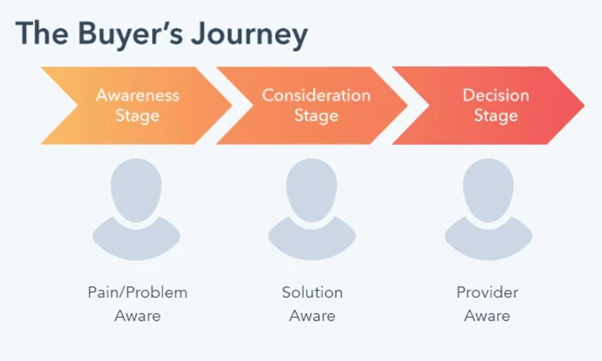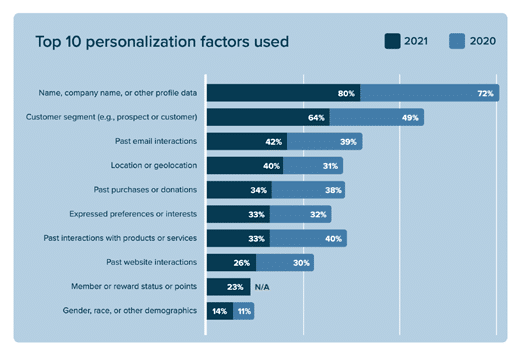Natasha Websdale, Marketing Specialist at Napier, shares her views on what B2B marketers need to consider when it comes to email marketing, drawing from her own experience, and two insightful reports.
Email marketing is an important part of any marketing strategy, keeping audiences up-to-date on the latest products, company news and business insights. Email activity has grown massively over the last couple of years with an increase of approximately 60% from March-April 2020 and remaining at this level throughout 2021.
As email traffic increases and subscribers’ inboxes fill up, competition to capture their attention has grown; making it more important than ever for B2B marketers to stay up to date on the latest email marketing techniques.
I recently came across a couple of reports talking about trends and challenges for 2022. The Smart Insights Email Marketing Trends 2022 report presents the views and predictions of 10 marketing experts, whilst Validity’s Mastering The New Email Landscape report analyses global email performance in 2021 and forecasts the future for email marketing.
This blog will look at some of the things these reports, and my own experience as a digital marketer has taught me to keep in mind in 2022.
The importance of the customer journey
Something that becomes increasingly clear to me as I continue my career in marketing is the importance of the customer journey. Not understanding where a customer is, or how to move them through the funnel could lead to missed opportunities. Email can help you reach potential customers at the right time and move them from being unaware of your business to become customers and brand advocates.
Stages include:
Awareness:
This stage is all about brand awareness. Educational content such as eBooks and White Papers can help to introduce you to your audience and position you as knowledgeable experts on specific challenges.
Consideration:
Here audiences are actively searching for a solution to their problem and could be considering your products and services. Sending them content such as case studies and testimonials can help to build trust with your brand.
Decision:
At this point, the audience is already educated about what you are offering, and the goal is to encourage them to press the “buy” button. Here you should include content such as demos and pricing sheets, providing the audience with the facts.
It is important to remember that not everyone’s journey looks the same, some may progress slower, and some may respond better to different content or a different email cadence. This is where email platforms that allow for audience segmentation, personalisation and triggered content come in.
Personalisation is vital
Personalisation is targeting an email or email campaign to a specific contact by leveraging the data and information you have about them. Chances are, if you are creating email campaigns then you are personalising the content. Personalisation is nothing new to us marketers, with Litmus sharing that 9 in 10 marketers believe personalisation is imperative to overall business strategy.
The top 10 personalisation factors used in email marketing are shown in the graph below. Complex personalisation factors, such as past website interactions, are being used significantly less than simple personalisation’s such as name. This is something we should take advantage of, to stand out amongst our competitors.
Basic personalisation tactics include using shortcodes such as “SubscriberFirstName” and “SuscriberEmailAddress” to insert the subscribers profile information. More advanced tactics include changing email content based on the data you have about the subscriber, such as the last product they brought and what pages they have visited on your website.
It is important to find the right level of personalisation within an email, some top tips to consider include:
Be sensitive to strangers
Be sensitive to the information you may have about a customer, including too many details and seeming like you know too much risks appearing creepy.
Plan for scenarios where there isn’t any or incorrect data
You may not have all the data you need, such as a first name. Make sure you have default options set up, so you don’t risk addressing an email to ‘Fname’.
Consider where they are in the customer journey
What are the expectations and needs of the audience at that moment? Marketing messages need to change depending on where the contact is in the customer journey.
Optimise automations and personalisation’s
AI is key here. For example, AI could replace manual segmentation to work out each customer’s interest towards certain categories and messages.
The power of marketing automation
I am continuing to learn the capabilities of Marketing Automation platforms and the benefits they can have. Platforms such as Hubspot and Marketo allow you to lead score, integrate CRMs, monitor campaign performance, know subscribers’ activity and much more.
This collected data means that you can trigger content, such as emails, based on the actions of each subscriber. For example, if a subscriber downloads a piece of content on a particular product, you could automate an email with more information on that product.
Triggering emails based on behaviour ensures the audience is receiving the right information at the right time, personalising their customer journey.
Marketing automation has become more intelligent with the addition of AI and Machine Learning, which evaluates historical interactions to generate insights for future communications. This can include the best time to send someone an email, how to optimise subject lines and automating content.
Measure what matters
Traditional benchmark metrics have been losing value over the last few years.
Apple’s Mail Privacy Protection (MPP) has had a significant impact, resulting in much higher and unreliable open rate figures. Validity says that as adoption of MPP continues, average open rates will level out between 30-40%. To get a true picture of open rates, senders will need to identify MPP opens versus genuine opens.
Because of MPP, marketers are turning away from opens to clicks as their key measure of subscriber engagement, meaning competition for clicks is higher than ever. But clicks are not a reliable measure for success either. Something that I have come across when measuring email campaigns is bot clicks. This is where “bots” click each link in an email to find any links that may contain harmful content. This skews click data and means that it is not a true reflection of the actions the audience is making.
It may be time to stop measuring the success of email campaigns on traditional metrics and instead how they help move us closer to our business goals. The future of metrics will be dependent on what B2B marketers are looking to achieve with their email campaigns and applying KPIs based on the actions they want visitors to take.
Email marketing continues to be a vital tool in any marketer’s toolbox. Considering our audience at every step, embracing new and emerging technologies and making sure we remain focused on our goals and not distracted by vanity metrics are just some of the things that can lead us to success in 2022.



